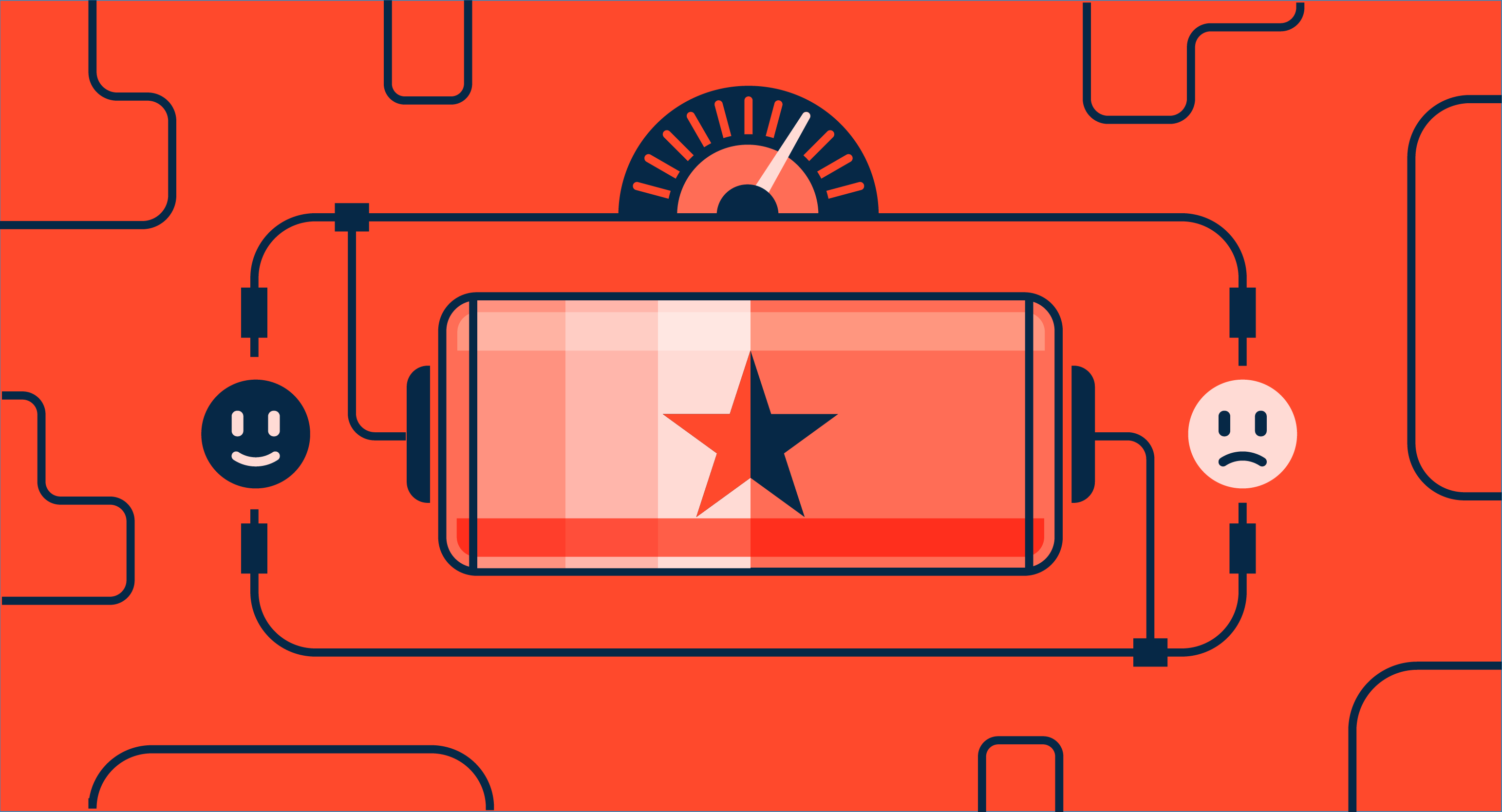The products we buy, adventures we experience, the food we eat - there is a digital platform available for virtually anything you want to review.
And between just the leaders in each of those categories: Trip Advisor, Yelp!, and G2, people have leftover 885 million reviews combined. A better product, a more enjoyable adventure, and a tastier meal are all on the other side of these reviews, But what exactly do companies do with reviews once they receive them? Especially the ~not so great reviews~?
In the first installment of this series, we talked about why reviews are important and how to get them. In this installment, we’re going to cover what you can do with your reviews and why “negative” reviews — when handled properly — might be the most valuable review a customer can leave.
What would you think if you saw a product with ONLY 5-star reviews? Would you believe every single customer ever was OVER-THE-MOON for that product and had NOTHING but glowing things to say? Likely not. Because no matter how great a product, or experience, or meal is, humans are subjective, uniquely different creatures with varying tastes, expectations, and opinions.
Your customers are just as smart: when they see a product with ONLY 5-star reviews, they’re suspicious. Is that company paying for reviews? (Don’t do this.) Are they only asking their best customers for reviews? (Don’t do this either.) Are they asking their customers to write 5-star reviews specifically? (This either.) In fact, 95% of buyers suspect that companies have censored or faked reviews when there are no negative reviews.
Potential customers will trust your reviews more if there’s a mix of reviews from 1-5 stars. The ideal star rating you’re looking for? Between 4.2 and 4.5. And to get there, you’ll need some not-so-great reviews!
of buyers are going to look specifically for negative reviews when making their purchasing decision.
Source: Spiegel
With negative reviews, prospects can qualify themselves out if something is a deal-breaker for them. I know that may seem scary at first because you want the chance to talk to all potential customers, but allowing prospects to do that saves you both from spending time on a sale that’s not going to happen.
On the flip side, they can also decide if the “negative” aspect of the review is something they can deal with. Say, for example, someone says a CRM tool isn’t a fit for an SMB company - it’s pretty complex, there are lots of rules and processes in place, and is just time-consuming for a team of two people when they have a thousand other things to be doing; if someone from an enterprise-sized company reads that review, it’s probably not applicable to them as they need the customization, and rules, and processes, and probably have someone to focus just on managing the CRM tool.
Lastly, as we’ll get into more below, negative reviews can help you to provide a better product or experience for your users. You don’t know what you don’t know, and reviews can give you insight on what’s not working for people, or what might be missing, or what’s making their life harder. And who knows, if you make those improvements, your customer might just go back and update their review.
Now that we’ve embraced the positives of negative reviews, let’s talk about what you can actually do with them. Because accepting negative reviews is only the first step; putting that mindset into action is where you’ll really begin to see the benefit.
One thing that EVERY company should do: Respond to reviews! 37% of buyers positively factor responses to reviews into their evaluation AND their perception of the brand. So don’t forget to respond to reviews! G2 has a comprehensive guide on how to respond to different types of reviews that you can check out right here.
If your company is experiencing a ton of negative reviews, find out how your product teams can use them to their advantage.
If you hear repeat feedback about how an aspect of your product is difficult or confusing to use, it might be time to revisit that specific action or feature. For example, if users are saying they’re annoyed by the fact that their file can’t be uploaded, but they don’t know why an easy fix might be to add a quick error message that lets them know why that file isn’t being accepted. Or if you’re constantly getting comments that your tool is difficult for customers with disabilities to use, it might be time to bring in accessibility consultants to get your product up to ADA (or your local equivalent) compliance.
Oftentimes in reviews, users provide an unofficial wishlist of things they’d love for a product to do to make their lives easier. It could be something a competitor offers and you don’t, or something no one in your space has even thought of yet. Take notes on customer wishes and decide if that’s something you can add to your roadmap. Customers will be infinitely more excited about new features they’ve asked for than ones that may have never crossed their minds.
You probably have a process in place for users to report bugs and it probably isn’t via reviews. But not everyone is going to know or remember or have the time to figure out what that process is. So by staying on top of reviews, you have another avenue to learn about bugs that may have popped up with your recent update or new product launch. Listen to the feedback, find the bug, and then respond with a thank you for reporting and an update on when the bug was/will be fixed.
Next up, find out how your marketing teams can utilize negative reviews for free market research.
We all know that different groups of people speak in different ways - that can mean slang, or cultural references, or levels of formality; if prospects don’t feel like they can relate to your messaging, they’ll probably assume you can’t help solve their problems. By looking at the way your customers write their reviews, you might find words/phrases that your target audience use on a regular basis that you were unaware of, or a pain point you didn’t think of, or a use case you never considered, that you can now update your messaging/talk tracks with.
Reviews aren’t always just about the product itself; oftentimes the buying experience is just as central to the feedback your customers have to share. If reviewers are saying they felt bamboozled and thought they were getting one thing, but after buying realized they got something else, there’s a disconnect somewhere in the buying journey.
Maybe your website talks about a feature you don’t offer anymore, or you used a phrase that means one thing in a certain industry or location, but something entirely different in another. Or maybe you’re using a lot of marketing-speak or buzzwords when people just want to know the bottom line. Use reviews as a way to audit the materials and scripts your sales team uses to make sure the buying experience is as smooth as possible.
If you have a lot of negative reviews and/or know you had a major issue that you’ve fixed that has changed the game for your product, actually using negative feedback that’s been remedied can be a strategic and effective marketing play. Dominos had fantastic success with this strategy; they used direct quotes from negative reviews in their advertisements where their CEO owned up to the fact that they could be better, explained what they did to improve, and used marketing to show how they were making good on their promise.
The key thing here is this: they did do better. They took the reviews seriously, made changes, and provided a better user experience. If this is a route you want to take, make sure you back up your marketing with an improved product/experience for your customers, that is validated by your customers before you bring those improvements to market.
Finally, let's not forget about how your sales and customer success teams can take advantage of negative reviews.
If you prep your team on how to respond to prospects that bring up negative reviews, you can build trust from the start of your relationship with a prospect. Come up with talking points for your sales reps about common issues/questions about a specific review/issue that includes: an acknowledgment that the issue exists/ed, what you did/are doing to address the issue, and when the issue was/will be resolved. Make sure to not get into the blame game here, just own the feedback and show how you are proactively responding to it, and your prospects will immediately have a better perception of your brand.
I don't think this is a new fact, but it’s worth repeating: getting a new customer is 5x more expensive than retaining existing ones. Having early warning signs about a customer who’s considering leaving can help you mitigate that risk. An easy warning sign? A review!
Make sure your Customer Success team is alerted whenever a review comes in from one of their customers. If there’s anything concerning in the review or any major issues you think could affect the chances of renewal, set up a time to chat with that customer and see how you can address the problem(s) they’re experiencing and hopefully save the account— and maybe even get them to amend the review.
At first glance, negative reviews can sting. But if you look at the bigger picture and implement some of the strategies discussed, negative reviews can be more helpful than they are harmful. Negative reviews give you a chance to improve your product, start a dialogue with your customers, and build trust with potential buyers. If you want to chat specifically about generating, managing, or repurposing G2 reviews, reach out to a G2 rep today.
Stay tuned for Part Three of our series about the future of reviews.

Let's talk about generating, managing, and using G2 reviews.
Gina is a Product and Customer Marketing Manager at G2. A Wisconsin native, and a University of Minnesota - Twin Cities alum, Gina is continuing her tour of the Midwest working out of G2's Chicago HQ.

Let's talk about generating, managing, and using G2 reviews.
In case you haven’t heard, reviews are all the rage.
 by Kristen McCabe
by Kristen McCabe
Google reviews matter for a very simple reason: it’s the introduction your customers have to...
 by Dhiraj Nallapaneni
by Dhiraj Nallapaneni
In the age of mobile advertising and social media, it is impossible to stop bad news from...
 by Stella Lincoln
by Stella Lincoln
In case you haven’t heard, reviews are all the rage.
 by Kristen McCabe
by Kristen McCabe
Google reviews matter for a very simple reason: it’s the introduction your customers have to...
 by Dhiraj Nallapaneni
by Dhiraj Nallapaneni
Never miss a post.
Subscribe to keep your fingers on the tech pulse.




